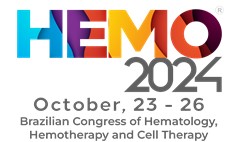
About 25% of Acute Lymphoblastic Leukemia (ALL) express T-cell antigens which being considered a predictive of high-risk group. This study was conducted to find out the immunophenotypic characteristics of T-cell Acute Lymphoblastic Leukemia (T-ALL) in young and adult Iraqi patients. Also, to determine the association of treatment outcome with the immunophenotype and the treatment regimen used.
MethodologyThe study was conducted using the laboratory data of the Central Flowcytometry Department at Baghdad Medical City between 7 January 2019 and 3 May 2020. The immunophenotypic records revealed 35 young and adult patients (age of 14-year or older) with T-ALL. The patients were classified into early (immature) T-cell Precursor (ETP) and Mature T-cell Precursor (MTP). Correlation of the patients’ outcome according to age, gender, and immunophenotypic expressions with the type of therapy used were evaluated.
ResultsThirty-five patients were diagnosed with T-ALL with a mean age of 28.1±12.3, and 74.3% were males. The stratification of patients according to the stage of leukemic T-cells maturation showed more frequent mature phenotype (cortical and medullary) than the immature (68.6% vs. 31.4%). The MTP markers expression showed a statistically significant higher rate in patients aged < 20-year (p = 0.03) or male (p = 0.01). Most patients received hyperCVAD 26 (74.3%) protocol, and UKALL was administered in the remaining (25.7%). Remission was achieved in 82.9%, while 11.4% failed to respond and 8.7% died during induction. Remission was maintained in 54.3% with 5-months of median follow-up, and relapse was found in 11.4%. The Overall Survival (OAS) at one year was 55%, with a mean survival of 13.8+1.7 months without an association with the type of therapy, subtype of T-cell, and myeloid antigenic expression. Despite a higher remission rate and lower death rate among UKALL group compared to HyperCVAD, the difference is non-significant (p = 0.81). The better response of MTP compared to ETP lineage was the only significant value with the outcome (p = 0.045).
ConclusionT-ALL is more commonly encountered in males. Remission was maintained in more than half of the patients with a better response and survival of the patients with MTP than those with the ETP subtype. The outcome was not affected by age, gender, or the treatment protocol.






